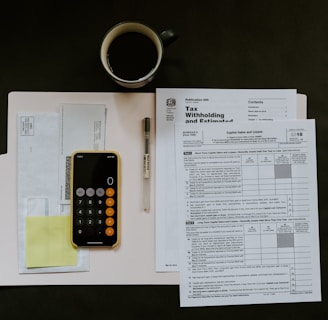Vat Added Tax (VAT)


Value Added Tax (VAT) is a consumption tax that is levied on the value added to goods and services at each stage of production or distribution. It is a significant source of revenue for the United Kingdom government. Here's a detailed overview of the UK VAT system:
VAT Rates:
Standard Rate: As of my last knowledge update in September 2021, the standard rate of VAT in the UK is 20%. This is the rate applied to most goods and services.
Reduced Rate: Some goods and services are subject to a reduced rate of 5%. This rate applies to items like domestic fuel, children's car seats, and certain energy-saving materials.
Zero Rate: Certain goods and services are subject to a 0% VAT rate, meaning no tax is applied, but businesses can still reclaim VAT on their inputs. These include most food, children's clothing, and books.
Exempt: Some items and services are exempt from VAT altogether. This means that no VAT is charged, but businesses cannot recover VAT on their related expenses. Exempt items include certain financial services, medical services, and education.
VAT Registration:
Businesses with an annual turnover above a certain threshold (as of my last update, it was £85,000) are required to register for VAT. However, businesses with lower turnover can also voluntarily register for VAT to reclaim VAT on their expenses and claim tax refunds.
VAT Invoices:
VAT-registered businesses must issue invoices that include specific details, such as the seller's VAT number, the buyer's VAT number (if applicable), a description of the goods or services, the VAT rate, and the amount of VAT charged.
VAT Returns:
VAT-registered businesses are required to submit regular VAT returns, usually on a quarterly basis. These returns report the VAT collected on sales (output tax) and the VAT paid on purchases (input tax).
The difference between the output tax and input tax is the amount the business owes to or can claim back from HM Revenue and Customs (HMRC).
Making Tax Digital (MTD):
The UK government introduced the Making Tax Digital initiative to digitize VAT reporting and payment. Most VAT-registered businesses are required to use compatible accounting software to keep digital records and submit VAT returns electronically.
VAT Flat Rate Scheme:
Some small businesses can use the VAT Flat Rate Scheme, which simplifies VAT accounting. Instead of claiming input tax on individual purchases, businesses pay a fixed percentage of their turnover as VAT.
VAT Exports and Imports:
Exports of goods and services to countries outside the EU are usually zero-rated, meaning no VAT is charged. Imports from outside the EU may be subject to VAT and customs duties.
Special Schemes:
The UK has various special VAT schemes, such as the Cash Accounting Scheme and the Retail Scheme, designed to simplify VAT accounting for specific types of businesses.
Compliance and Penalties:
It is crucial for businesses to comply with VAT regulations. Failing to register for VAT when required or making errors on VAT returns can result in penalties and interest charges.
Please note that tax laws and rates can change over time, so it's essential to consult the latest guidelines and regulations provided by HMRC or seek advice from a tax professional to ensure compliance with the current UK VAT requirements.
